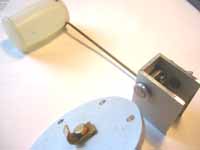 |
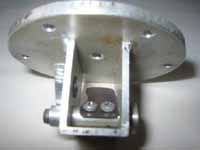 |
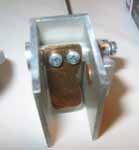 |
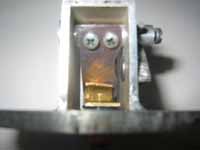
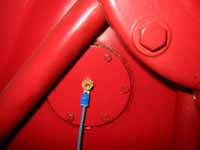 |
||
by Peter Stiller TC 3990
 |
 |
 |

 |
||
|
|
After installing the new fuel sender petrol was leaking out again and caused paint-damage at the fuel tank. I tried cork gasket and rubber gasket -- but without susses. So I decided to build a construction to avoid problems for the future. On a 4 mm thick aluminium plate I drew a 71 mm thick circle with 6 fixing holes (60 mm OD) and 1 hole in the middle. With a fretsaw I sawed out the assembly plate and grinded it round. In an alu-U profile 30x20x2mm, 39mm long a hole was drilled in one corner. A corresponding alu-shaft was flattened one-sided and 2 threads 2.5 were cut for the contact blade . (picture 1) With a special alu-soldering iron (melting point around 380-400 degree C) the U-profile was soldered on the assembly plate. Attention should be paid that the alu-oxide layer is brushed away with a stainless-wire brush before soldering and also during the heating. (picture 2) Against the alu-shaft contact bronze (0.3 - 0.5 mm thick) and as assembly plate a 1 mm thick bent bronze with 2 fibre bushes using a messing screw, has to be screwed. Fibre bushes are available in an electronic-shop. In the shaft a hole has to be drilled and the old "measuring feeler" has to be fastened. Please note the height of the "feeler" with LOW (bend) otherwise only some liter instead of around 11 liter are reserved. (picture 3+4) Now the most important!!! I found a sealant which is petrol-resistant because I wanted to do without any gaskets. It is called DP 300 (Schrauben Würth, Germany) 20 ml, produced under the licence of Rolls & Royce. I brushed the finished assembly plate, the tank opening and the messing screw inside as well as a little bit in the 6 tank drill holes with the DP 300. After that, screw tightly and after a while tight up again. Tight since 6 years! (picture 5) But attention, handle DP 300 with care. I haven't found any chemical to eliminate leaking DP 300, therefore I had to paint the "remains" also. Peter Stiller
|
|